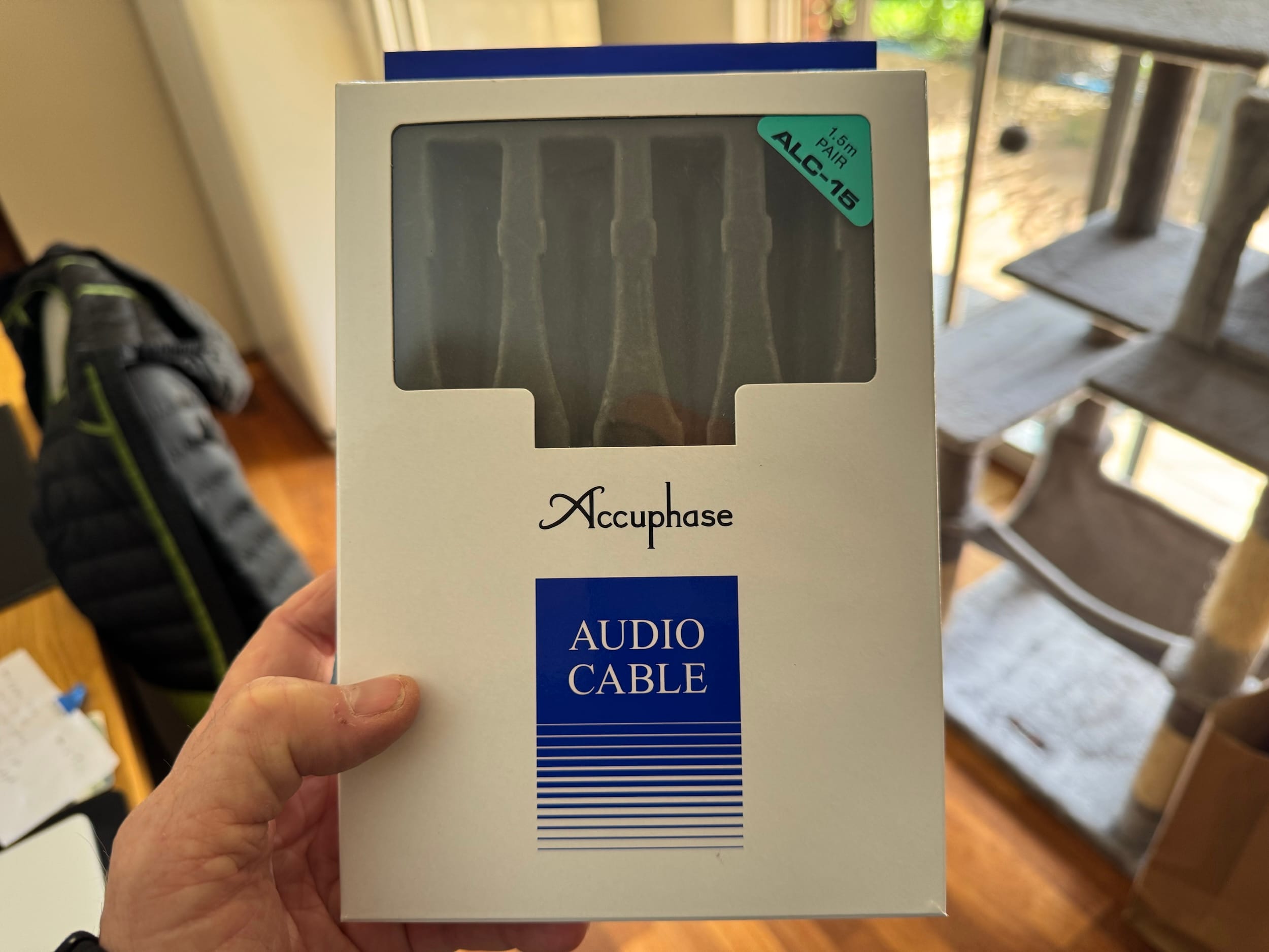Yes, but there is much more to know.
Let’s get this out of the way: good cables always improve system performance. That said, there is more snake oil and pseudoscience in cables than just about any other aspect of hi-fi, and the hi-fi world is already filled with nonsense. You know my thoughts on nonsense, so let’s clear some up.
Audio ‘Jewellery’
One of the problems here is that buyers often have no idea what makes a good cable and many just want what looks cool. Big mistake.
Thicker is not always better. There are some ridiculously thick interconnects out there for example. Interconnects and mains cables 5cm thick aren’t better, they are just silly. They can damage or even break connectors and can cause serious harm to really expensive gear. I’ve repaired the damage caused by some only recently.
Ask the maker of the cable if they know the loading specifications for the RCA connector they want you to attach their cable to. People imagine thicker must mean better, but it just isn’t.
Likewise, prettier is not better and aesthetics have absolutely nothing whatsoever to do with electrical performance. Cable construction is what matters. Poorly made or incorrectly terminated cables can act as antennas and fry amplifiers and speakers.
The kookier and prettier a cable looks and feels, the more likely it is to sell. Add in a few meaningless marketing phrases like ‘super transconductance shield’ and ‘femto conductive polymer’ and combine them with the average shopper’s gullibility and poor grasp of science and you have a guaranteed seller!
It’s no surprise that there are so many ’boutique’ cable manufacturers out there. There’s a TON of money to be made in this segment of the market.
The Truth
So what IS a better cable? BETTER is better. Technically better, higher-quality cable stock, with higher-purity copper and silver conductors, better solder, better insulation, better shielding, fewer metal types, better connectors, and better construction.
Have folks who understand signal transmission put all that together and you have better cables. It’s pretty straightforward. It’s not expensive to make very good cables, hence the proliferation of excellent DIY cables out there.
Check out what’s used in Abbey Road or Air Studios, for example. You’ll find a ton of Canare and Mogami cable in mission-critical applications, and these manufacturers make cable stock for the boutique brands people spend big bucks on. I use Mogami and Accuphase cables in my system.

Directionality
Are cables directional? No, there is no directionality in properly designed cables or almost any cables for that matter. If cables were directional they’d act like diodes and that would be harmful to sound, rectifying the signal and introducing massive distortion, so you’d better hope your cables aren’t directional.
Surprised that this isn’t what your favourite hi-fi equipment reviewer, retailer or guru said? Don’t be. Have a look at who advertises in their publications, on their websites and the stock they are selling. That’s called a conflict of interest. Do you see me selling any cables..?
Nordost, one of the great science-based (rather than BS-based) cable manufacturers, states that cables have no directionality. That’s not just about their cables, they’ve stuck their collective necks out to state the truth about all cables.
But Mike, my cables are directional, it says so on the jacket and the salesperson told me they were.
Great, but they aren’t. ‘Directionality’ sells, so most cables are simply labelled as directional. The average salesperson’s understanding of the science here will be limited let’s say, so choose your source of information wisely.
Conclusion
Let’s sum up what makes a good cable:
- Premium conductor materials like high-purity copper or silver
- Premium insulator materials like Teflon and cotton
- Premium connectors, Amphenol, WBT or CMC for example
- Well designed shielding
- Cable symmetry, balanced or pseudo-balanced
- Silver and copper-based solders
- Minimising cable length
- Low cable resistance and capacitance
- Technically informed, properly engineered designs
Be especially wary of gurus selling cables. Choose carefully, from known quality manufacturers, based on good science, not what looks ‘cool’.
Discover more from LiQUiD AUDiO
Subscribe to get the latest posts sent to your email.
